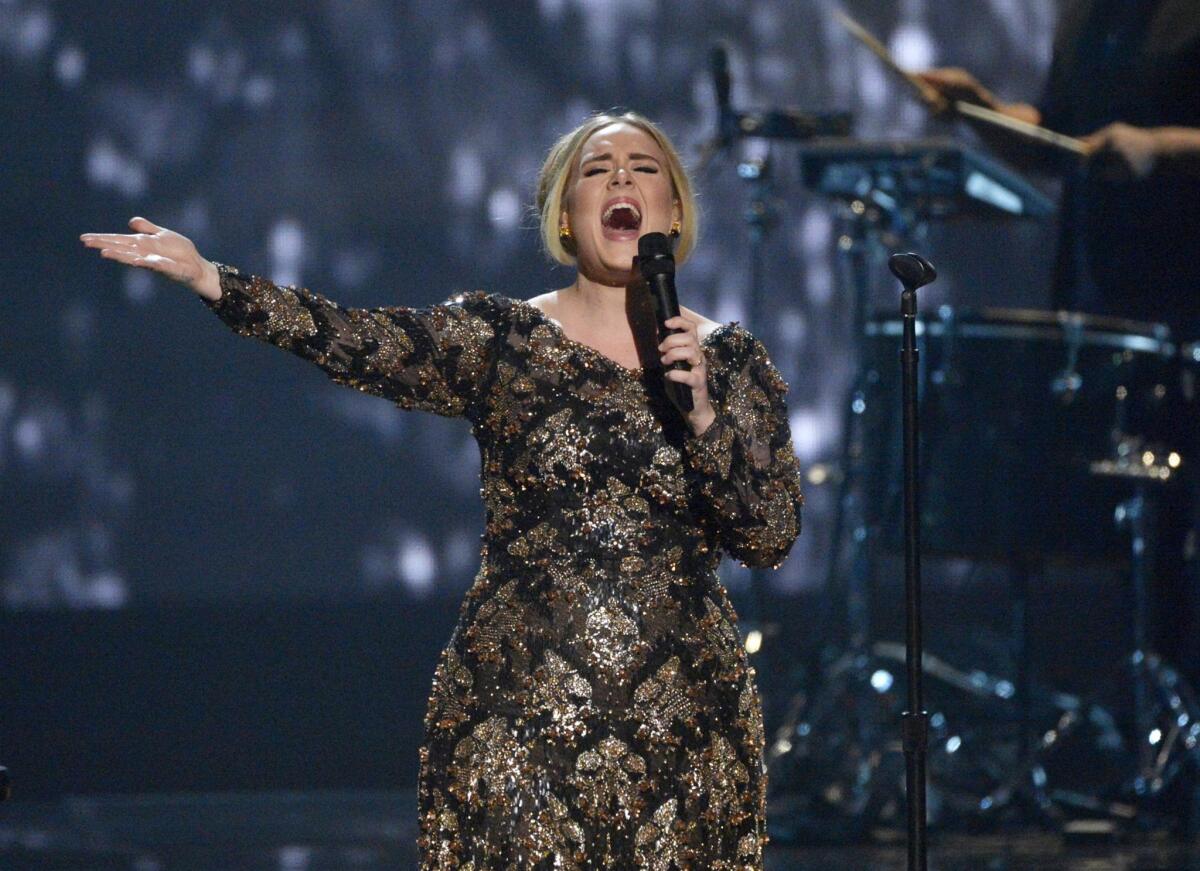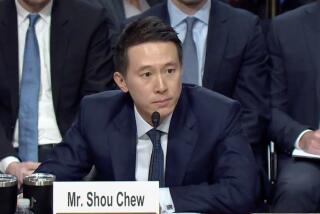Column: 2015: The most hyperbolic year ever

Adele performs at Radio City Music Hall in New York. The concert, “Adele Live in New York City,” was televised on NBC on Monday, Dec. 14.
It’s the end of the year, when newspaper columnists are supposed to fill in the blank — “2015 was the year of _______ ” — and decide whether the phenomenon in question falls into the category of “good thing” or “good riddance.”
This year, however, so much of what happened has been framed as larger-than-life, as history in the making that I find myself at a loss when it comes to identifying the One Defining Trend.
There was the big stuff, like guns, refugees and government dysfunction. And then there were the perhaps more boutique-like but no less compelling points of discussion, such as the rise to fame of the writer Ta-Nehisi Coates (“the new James Baldwin”), the public emergence of Caitlyn Jenner (who was on the short list for Time magazine’s Person of the Year), and the degree to which campus political correctness has seemingly run amok (if you read this column with any regularity you don’t need me to provide examples).
It wasn’t enough that Adele had a great voice and sold a lot of records. She had to be “the biggest pop music story of our time” (thanks, Rolling Stone).
It wasn’t enough that Adele had a great voice and sold a lot of records. She had to be “the biggest pop music story of our time” (thanks, Rolling Stone). And it wasn’t enough that a few videos of egregious student outrage went viral; it had to be an “epidemic” of coddled, narcissistic millennials whose oversensitivities were ruining the academy for all time.
The way we’ve been fixating on a few extreme examples of such phenomena does more than just make the perpetrators look stupid. It’s creating cultural distortion and generating misinformation.
Last week, for instance, the news-o-sphere graced us with one of the most troll-baiting college controversies yet, a melee at Oberlin College over “culturally appropriative” dining hall offerings. It seems that, among other culinary grievances, a few students thought the manner in which their sushi was being prepared was “disrespectful” to the Japanese because the rice was undercooked and the fish was not fresh enough.
(Never mind that Oberlin is in Ohio, a place not traditionally known for its raw fish cuisine or its training of sushi chefs. Never mind that the idea of being able to eat sushi in a college cafeteria is … well, never mind, again.)
It can be immensely pleasurable to make fun of this kind of thing. But that doesn’t excuse portraying outliers as pace setters. What Oberlin eats is a non-story — at least the parts of it we’re hearing most about.
Oberlin has about 3,000 students, only a handful of whom seem to be complaining about microaggressive food. Among them, at least one was onto something, but it wasn’t underdone sushi rice. A student said she had joined the protest because when the school menu included Indian tandoori on a Hindu holiday, the tandoori was made with beef, even though many Hindi do not eat beef. This is more a gaffe than a punishable offense, but at least it’s something that legitimately warrants fixing.
Predictably, though, the ridiculous demands about sushi got all the attention. That in turn got people sputtering on social media about the politically correct apocalypse, at least when they weren’t rhapsodizing about Adele or consigning anyone who disagrees with Coates to the wrong side of history.
Which brings me back to what stands out about 2015. If the last 12 months can be characterized at all, it has to be as the year of hyperbole. We mock the blustering Donald Trump, with his “astonishingly excellent” doctor’s report and his pronouncement that Hillary Clinton was “the worst secretary of State in the history of the United States.” But a lot of our Facebook and Instagram feeds aren’t much better.
And the bluster starts young. On the radio show “This American Life,” host Ira Glass recently interviewed three pre-teenage girls about why they post selfies on Instagram and wait for their friends to respond with comments like “stunning!” and “perfect!” and “cutest!” The girls suggested it was a way of monitoring their place in the ever-fluctuating social hierarchy.
There may be something to that, but considering the number of adults passing around comments like “life changing!” and “essential reading!” about events they don’t seem to care much about or articles they haven’t read, I have to wonder whether Trump’s rhetoric and pre-teen gush are merely the way we’ve all gotten used to expressing ourselves online.
In which case, we won’t be saying good riddance to hyperbole any time soon. In fact, 2016 may end up being the year of hyperbole all over again. And that will be the worst thing ever in history. Just you wait and see.
Twitter: @meghan_daum
Follow the Opinion section on Twitter @latimesopinion and Facebook
More to Read
A cure for the common opinion
Get thought-provoking perspectives with our weekly newsletter.
You may occasionally receive promotional content from the Los Angeles Times.







